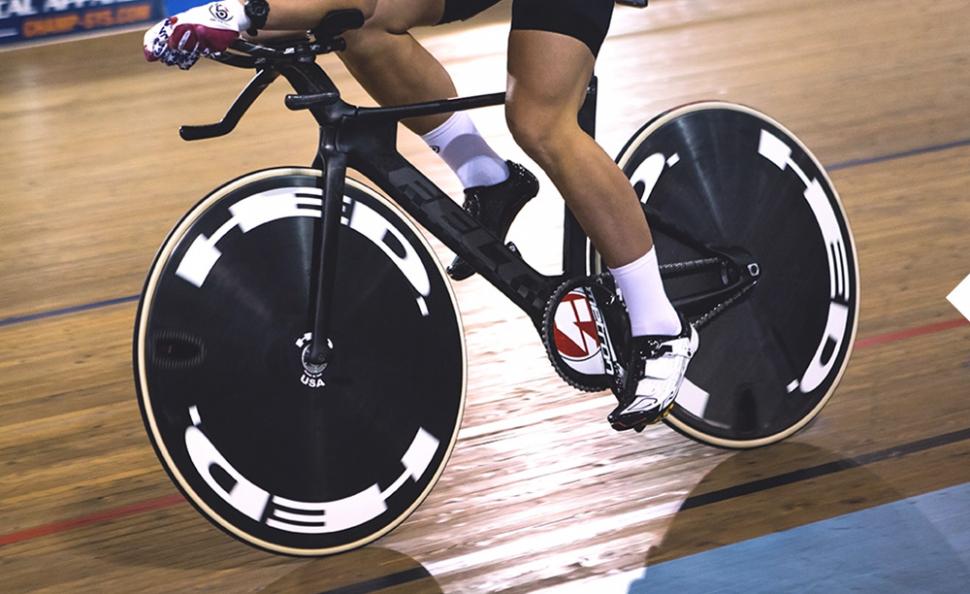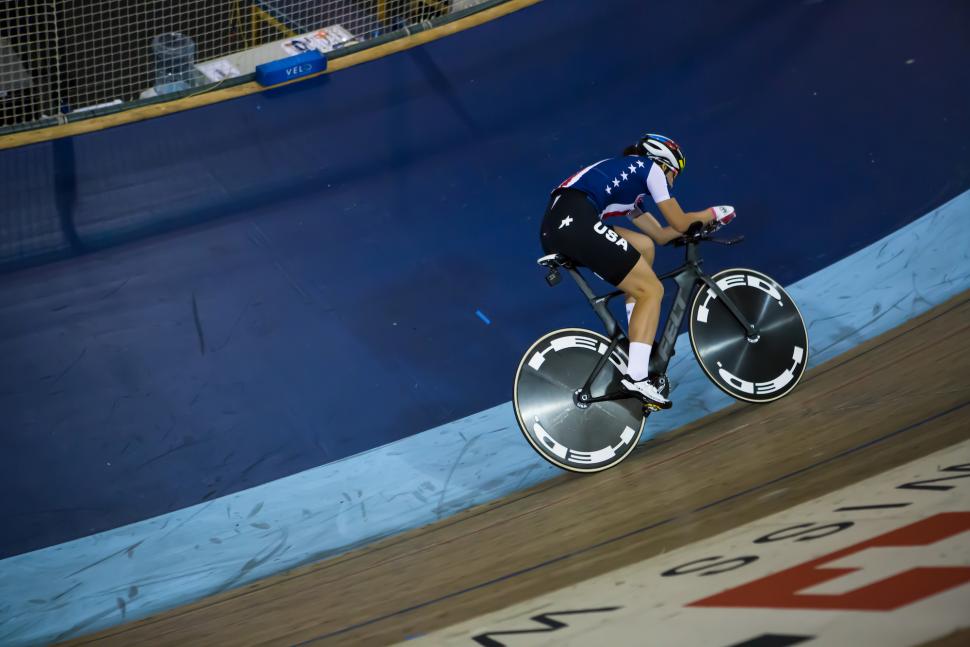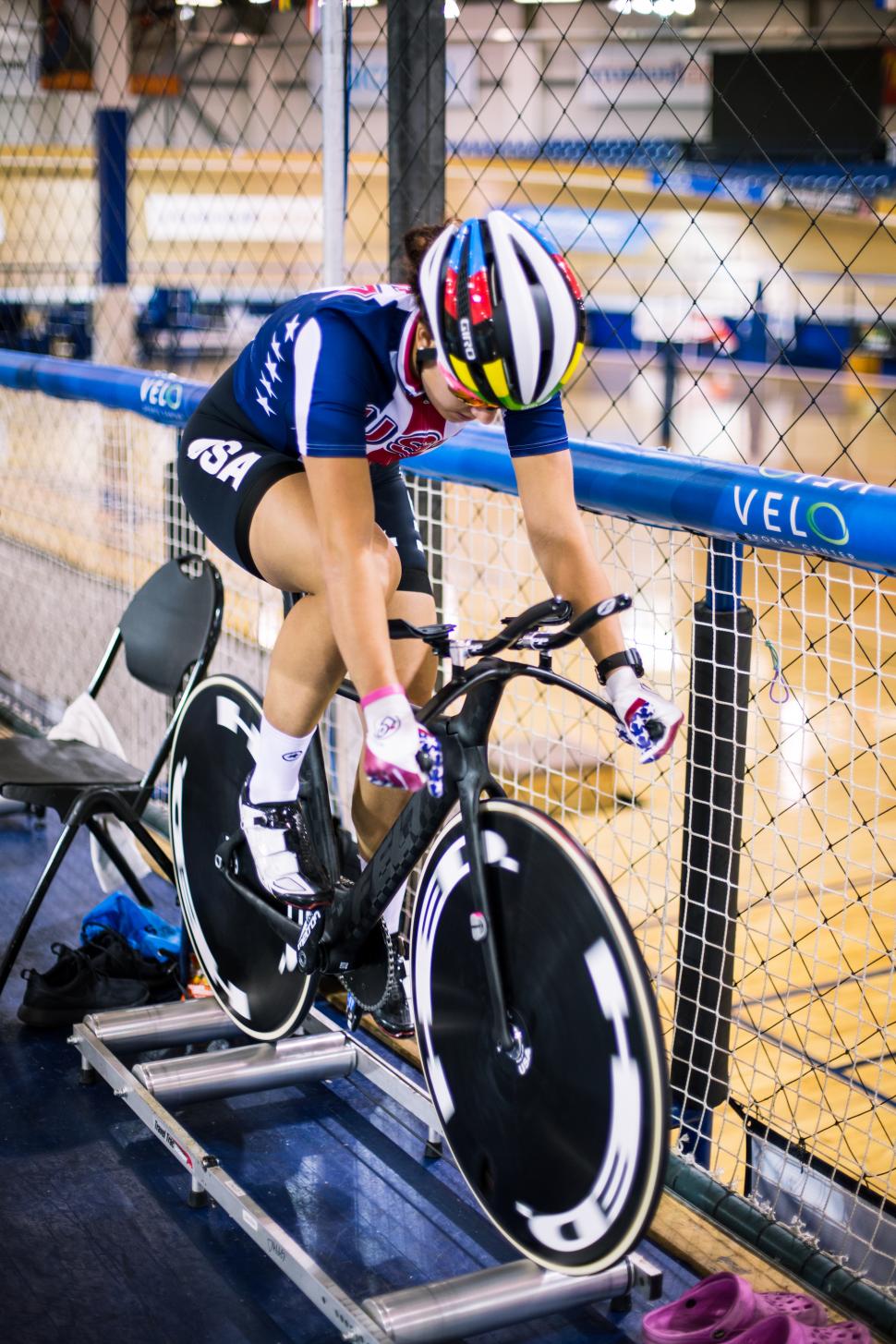- News
- Reviews
- Bikes
- Accessories
- Accessories - misc
- Computer mounts
- Bags
- Bar ends
- Bike bags & cases
- Bottle cages
- Bottles
- Cameras
- Car racks
- Child seats
- Computers
- Glasses
- GPS units
- Helmets
- Lights - front
- Lights - rear
- Lights - sets
- Locks
- Mirrors
- Mudguards
- Racks
- Pumps & CO2 inflators
- Puncture kits
- Reflectives
- Smart watches
- Stands and racks
- Trailers
- Clothing
- Components
- Bar tape & grips
- Bottom brackets
- Brake & gear cables
- Brake & STI levers
- Brake pads & spares
- Brakes
- Cassettes & freewheels
- Chains
- Chainsets & chainrings
- Derailleurs - front
- Derailleurs - rear
- Forks
- Gear levers & shifters
- Groupsets
- Handlebars & extensions
- Headsets
- Hubs
- Inner tubes
- Pedals
- Quick releases & skewers
- Saddles
- Seatposts
- Stems
- Wheels
- Tyres
- Health, fitness and nutrition
- Tools and workshop
- Miscellaneous
- Cross country mountain bikes
- Tubeless valves
- Buyers Guides
- Features
- Forum
- Recommends
- Podcast
TECH NEWS
 Felt TA TRD 1.jpg
Felt TA TRD 1.jpgFelt's new Olympic track bike - spot the deliberate mistake
Felt has only gone and put the drivetrain on the wrong side of its new track bike! But there’s method to this madness, according to the company that has been challenged with designing a track bike to help the USA Cycling team take on Team GB at the upcoming Rio Olympics.
The new Felt TA TRD is the bike the US track pursuit team hope will enable them to take gold in Rio this summer. Beating Team GB, the most dominant track squad at the last few Olympics, was the driving force behind the development of the new bike.
“The initial discussion for this project began four years ago. We looked at the success that our U.S. women had in London taking the silver medal behind Great Britain and asked ourselves, what’s it going to take to win, and to beat Great Britain and the rest of the world’s top teams in 2016? We wanted Felt’s expertise to help us go one better,” says Jim Miller, Vice President of Athletics for USA Cycling.
The new Felt TA TRD builds on the TK1 first introduced 8-years ago, but while that was a bike designed to be used in many different track events, this new one is designed expressly for the pursuit discipline. It brings some big developments based upon extensive testing with the US team pursuit squad, backed up by the usual computational fluid dynamics modelling and wind tunnel testing that most new aero products go through.
“We conducted a lot of research regarding airfoils inside a velodrome,” says Anton Petrov, Head of Aerodynamics at Felt Bicycles. “As part of our initial research, we found that there exists a specific range of yaw on the track and that it is not a symmetric airflow. So we set out to design a bike with asymmetric cross sections. With this, you’ll get an airfoil that will work better from one side than it does from the other. And if you have asymmetric airflow, you then optimise shapes for that flow. And the end result is a faster bike. The TA FRD is designed specifically for the velodrome.”
The most radical development has been the positioning of the drivetrain (chainset, chain and rear sprocket) on the left-hand side. Felt says that it found bikes tested faster when the airflow is from the drive side of the bike, so moving the drivetrain from the outside of the track to the inside, and therefore placing it in the airflow, is claimed to make the bike more aerodynamic. Felt also says another benefit is improved handling.
“Wind is coming in towards the frame from the left-hand side,” explains Jeff Soucek, Director of Engineering. “So by moving the drive side on the bike from the outside of the track [right-hand] to the inner part of the track [left-hand], not only does the bike become more aerodynamic, it also helps with moving the weight and center of gravity inboard, as well. Other things like the narrow front and rear hubs and a lot of various small features have gone into the bike to make it very unique and incredibly fast.”
To enable this unique bike to be produced relied on some willing equipment partners. Vision developed a custom version of its Metro TT crankset for the bike, while Stages produced a carbon fibre dual sensor power meter for the bike. Other key changes include a narrower fork and rear stays, a change made possible with HED Cycling Products producing a custom wheelset with narrow hubs, 70mm at the front and 95mm at the back.
Other changes include new tapered dropouts which eliminate the usual set screw that positions the rear axle, but instead, an aero washer and the taper of the dropout stops the wheel sliding forward. The frame is made from the high-grade TeXtreme carbon fibre that the company has been using in its high-end road bikes for a number of years.
Felt has also refined the tube profiles of the frame that also take into account the constant wind direction from the left side of the bike - they’re now asymmetric. Felt has adapted the profile of the head tube and down tube to be more efficient from the left-hand side.
This is a bike unlike any other, and it does raise the question that, if it’s as aerodynamically efficient as Felt make it out to be, why hasn’t Team GB done anything similar? It’s also worth noting that Felt doesn’t offer any aero data comparing the bike to its previous track bike, or indeed how it compares to other commercially available track bikes.
Which brings us on to the last point, we’ve no idea how much this bike is going to cost when it’s available, even if it will be available to buy. The UCI rules dictate that all equipment used in competition should be available, but it's not something they really go out of their way to enforce. Team GB get around this by selling the bikes at ridiculous prices that no amateur racer can afford.
David worked on the road.cc tech team from 2012-2020. Previously he was editor of Bikemagic.com and before that staff writer at RCUK. He's a seasoned cyclist of all disciplines, from road to mountain biking, touring to cyclo-cross, he only wishes he had time to ride them all. He's mildly competitive, though he'll never admit it, and is a frequent road racer but is too lazy to do really well. He currently resides in the Cotswolds, and you can now find him over on his own YouTube channel David Arthur - Just Ride Bikes.
Latest Comments
- slc 3 min 10 sec ago
Not Park St, but fairly near, in a region of the city that was essentially given over to heavy traffic infrastructure. ...
- brooksby 18 min 56 sec ago
Looks like local cyclists need to start going along there in primary position then…
- wtjs 56 min 38 sec ago
One of them may well be that there may be a perception that the police won't take those reports seriously. We absolutely do, we absolutely will
- hawkinspeter 1 hour 46 min ago
I re-fuse to believe that not charging drivers is the current attitude
- chrisonabike 2 hours 31 min ago
Well, there are always recumbents!...
- Losd 2 hours 39 min ago
Pretty stupid criticisms. The UCI are using the tools they have to regulate the races. Ignoring it won't make races safer. And comparing with...
- Matthew Acton-Varian 2 hours 41 min ago
Most modern cars, especially SUV's perform very badly on the Moose test. Essentially a stunt driver has to weave through tightly spaced cones at...
- Mr Blackbird 4 hours 59 min ago
His hands are too small to reach the brake levers and his tie gets caught in the chain.
- David9694 14 hours 39 min ago
Further to A Look at Logical Fallacies a couple of months ago. My theory is that 5...
- wtjs 14 hours 55 min ago
A dangerous, reckless and aggressive BMW driver. Who saw that coming?!





Add new comment
15 comments
I can't remember the year or the rider but they tried this at The Olympics in the 1980's. Might have been the USA or Canada Team. The idea back then was that the left hand, inside, leg could put out more power than the right hand, outside, leg due to gravity and it being lower on the track. So they put the drive chain on the left hand side, in reality it didn't actually seem to make much difference. The story is told in "Tales from The Toolbox" by Scott Parr, which is a good read.
As a US citizen and rabid supporter of the new clean Team USA, I sure hope this works out better for us than EPO. For you team GB guys, I wouldn't sweat it too much, just breathing a little to the right side should make up the difference! If I was Team USA, I'd be pretty careful about where my buttocks were positioned, and be wondering if I'm going to get a stiff neck holding it perfectly still. I have to be honest though, as a former leatherman from the 80's, couldn't you just spit one extra time? Gotta go...my Win tunnel appointment is in a half hour to see if we can match Felt's results by not wearing socks...
Stopping the toe scuffing (in pic#5) would be worth a few 'incremental' watts?
All this techo stuff will be wasted at Rio Olympics because the track will be raced clockwise.
"Aero washer" - I need one of these.
Hmm, will it? Doesn't sound right.
The drop outs sound to me like a system that has been used for horizontal dropouts in BMX, where the tickness tapers, thicker as you move towards the BB. You put the axle where you want it and tighten it there, but then it can't move forwards, as the taper locks it in place.
You can still chose where to put the wheel, tight or loose chain
If the newly designed rear dropouts stop the wheel moving forward, why is the chain slack?
Track slack! For lower resistance.
Did they not get the memo from the IOC stating that as Brazil is a southern hemisphere country, the track cycling will be ridden in a clockwise direction to negate the Coriolis effect?...
I thought this article was merely going to point out that the Felt marketing machine had flipped the image and not noticed that the conventional bike now looked 'wrong'.
To be fair, it's the kind of marginal gain that BC would do, get laughed at by everyone, then proceed to clean up in the big competitions. Let's hope it doesn't work quite so well for the USA. I'm happy for them to beat the Aussies into 2nd though!
I guess it's a hard one to measure in a wind tunnel as you need to balance the improvements in aero on the corners with any losses on the straights? Certainly radical. Got to go well if you're going to go with such a weird set up!
Team GB get around this by selling their track bikes at ridiculous prices that no amateur racer can afford .
(Think it should read like that instead?)
Yes. Thanks
Easily testable by other teams by just riding clockwise on their current bikes (might take a bit of getting used to for the riders, but should be possible to ride at a steady power) and seeing if it makes a difference. It seems like it should make some difference, but whether that is perceptible is another matter.
It's about psychology not aerodynamics.
Mostly.